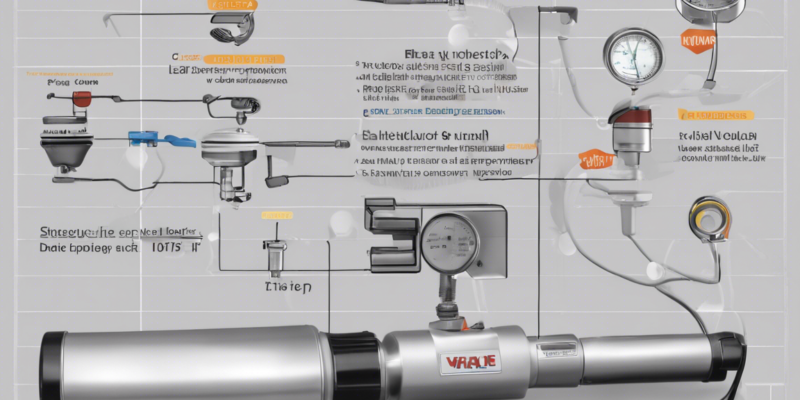Whether you’re an automotive enthusiast, a professional mechanic, or someone who simply wants to save money on costly repairs, detecting vacuum leaks in your vehicle is a crucial skill to have. Vacuum leaks can lead to a variety of issues, including poor fuel efficiency, rough idling, decreased engine performance, and overall reduced engine longevity. In this comprehensive guide, we will explore how to detect vacuum leaks with precision, equipping you with the knowledge and tools needed to diagnose and resolve this common automotive problem.
Understanding Vacuum Systems
Before delving into the detection methods, it’s essential to have a basic understanding of vacuum systems in vehicles. A vacuum system plays a crucial role in various functions, such as controlling air-fuel mixture ratios, emissions, power brakes, HVAC systems, and more. In an automobile, the engine creates a vacuum as it runs, and this vacuum is used to power different components when combined with a vacuum pump or a vacuum reservoir.
Symptoms of Vacuum Leaks
- Rough Idling: A common sign of a vacuum leak is an irregular or rough idling engine.
- Decreased Performance: If your vehicle experiences a decrease in performance or acceleration, it could be due to a vacuum leak.
- Check Engine Light: Sometimes, a vacuum leak can trigger the check engine light on your dashboard.
- Hissing Noise: In some cases, you may hear a hissing sound coming from the engine bay, indicating a leak.
Methods to Detect Vacuum Leaks
1. Visual Inspection
Begin by conducting a visual inspection of the vacuum lines and hoses. Look for any cracks, breaks, or loose connections. Pay close attention to areas where hoses connect to different components, such as the intake manifold, throttle body, or vacuum reservoir.
2. Smoke Test
A smoke test is a highly effective method for locating vacuum leaks. By introducing smoke into the vacuum system, you can visually identify the source of any leaks. Specialty smoke machines designed for this purpose are available, or you can create your own using a cigar or a smoke pen.
3. Propane Torch or Carburetor Cleaner
Using a propane torch or carburetor cleaner, carefully introduce the gas around the vacuum lines and connections while the engine is running. If there’s a leak, the engine’s RPM will change as the additional fuel enters the system through the leak.
4. Manometer
A manometer is a precision tool that measures vacuum pressure. By connecting a manometer to different points in the vacuum system, you can pinpoint abnormal pressure readings that indicate a leak.
Resolving Vacuum Leaks
Once you’ve successfully detected a vacuum leak, it’s crucial to address it promptly to prevent further damage and restore your vehicle’s performance. Depending on the severity and location of the leak, you may need to:
– Replace damaged hoses or lines: Damaged hoses or lines should be replaced with new ones to ensure a proper seal.
– Tighten connections: Loose connections can often be resolved by tightening them securely.
– Use sealant: In some cases, using a high-quality sealant designed for vacuum systems can temporarily fix minor leaks.
Frequently Asked Questions (FAQs)
1. Can a vacuum leak cause the car to stall?
Yes, a significant vacuum leak can disrupt the air-fuel mixture, leading to stalling or rough idling.
2. How much does it cost to fix a vacuum leak?
The cost of fixing a vacuum leak can vary depending on the severity of the issue and the location of the leak. It can range from a simple DIY repair to a more complex professional service.
3. Can a vacuum leak affect fuel efficiency?
Yes, a vacuum leak can disrupt the proper air-fuel ratio, resulting in decreased fuel efficiency.
4. Are vacuum leaks dangerous?
While not immediately dangerous, vacuum leaks can lead to engine performance issues and potential long-term damage if left unresolved.
5. Can I drive with a vacuum leak?
It is not advisable to drive with a significant vacuum leak, as it can lead to engine damage or poor performance.
In conclusion, understanding how to detect and resolve vacuum leaks is essential for maintaining your vehicle’s performance and longevity. By utilizing the methods outlined in this guide and promptly addressing any identified leaks, you can ensure that your vehicle operates at its optimal level. Remember, regular maintenance and inspections play a key role in preventing and addressing vacuum leaks before they escalate into more significant problems.

